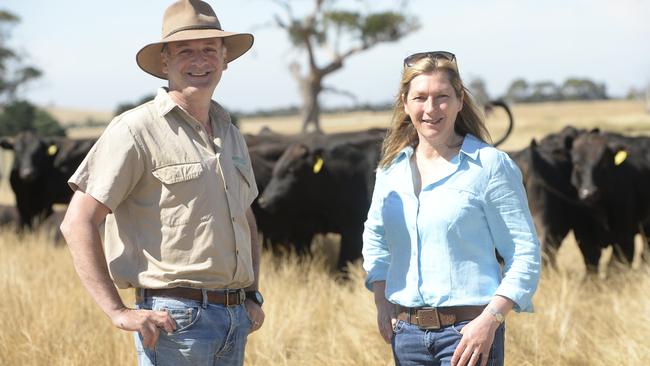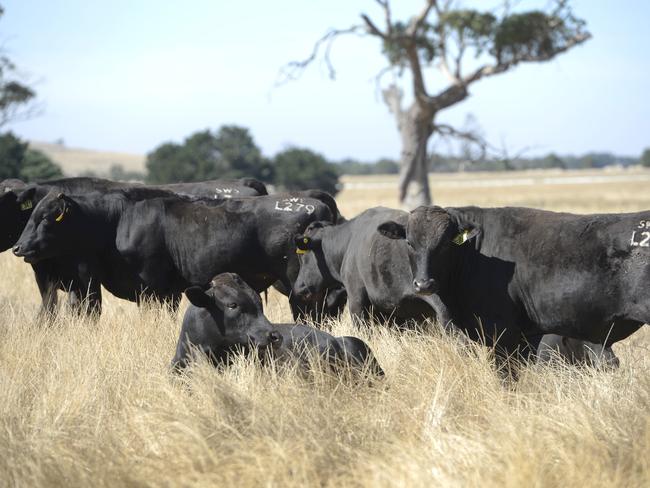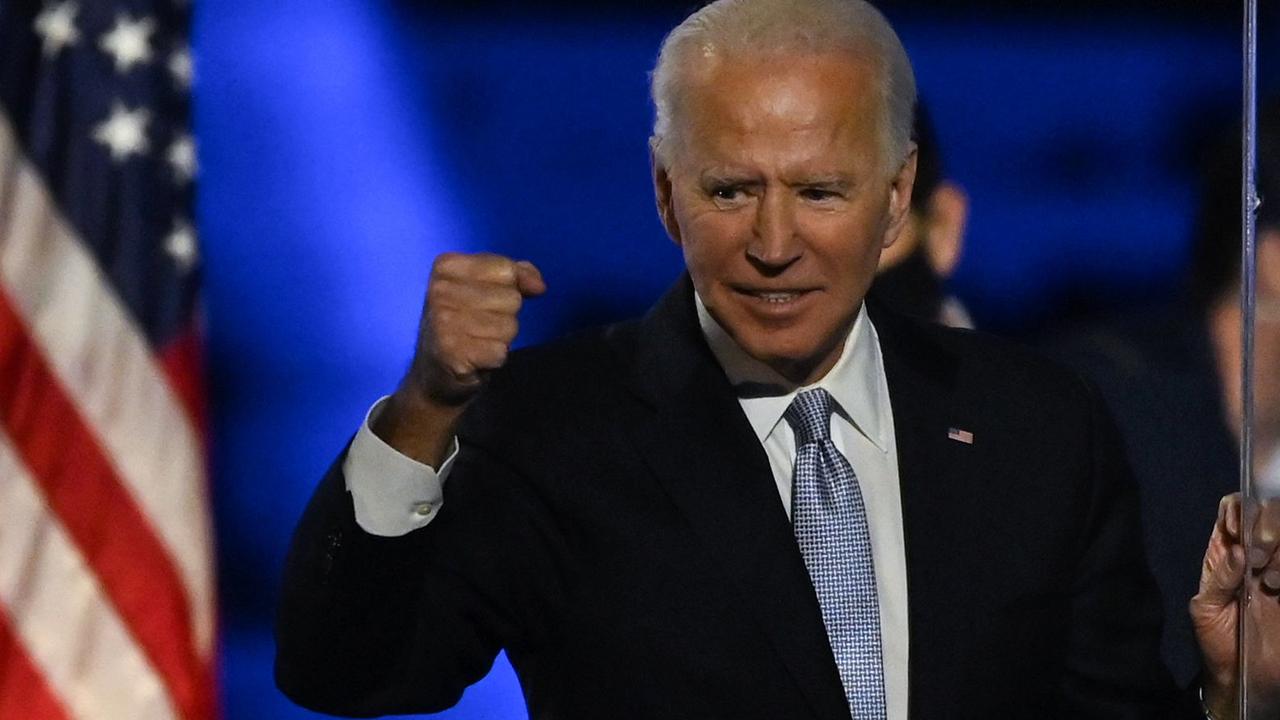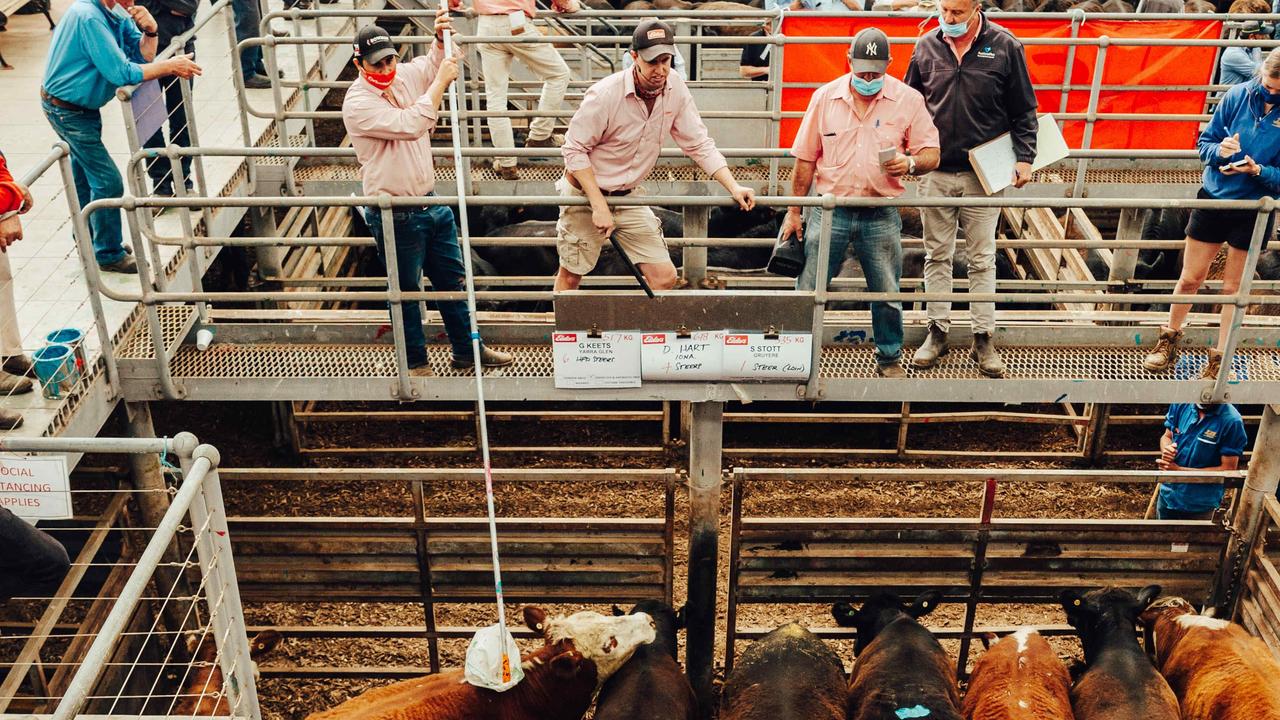Wagyu beef on the rise as world gets the taste
WAGYU has become the haute couture, or the fine wine, of the beef industry, as NICOLA BELL explains.

WAGYU has become the haute couture, or the fine wine, of the beef industry.
From humble beginnings when the breed was first introduced in Australia 26 years ago, Wagyu beef is now a luxury that sits on high-end restaurant menus and has become an industry leader in genetics and performance data.
Wagyu has also played a major role — if not the starring role — in improving the quality of beef consumed in Australia and around the world.
Numbers are growing at a faster rate than any other breed, with the latest figures from the Australian Registered Cattle Breeders’ Association showing the Wagyu is sixth in the breed hierarchy and is expected to rise again when the next figures are released this year.
In 2015, there were 8463 new Wagyu calves registered, up 12 per cent on 2014.
When Wagyu first appeared in the ARCBA statistics in 1993, there were 72 registered cattle.
Membership growth of the Australian Wagyu Association has been even more dramatic, with a 39 per cent lift in member numbers last year. In 2011 joinings to Wagyu sires were 90,000, had jumped 24 per cent by 2014, and the AWA has predicted 821,000 Wagyu joinings by 2020 with a turn-off of 276,000 or 74,000 tonnes of Wagyu beef, 90 per cent of which would be exported.
Adding to this growth has been the record prices being achieved for Wagyu and Wagyu-cross in the past two years.
This is in part due to exceptional beef prices across the whole industry, as well as supply and demand of Wagyu.

It is also thanks to prices now being benchmarked because online selling platform AuctionsPlus started Wagyu specific sales in 2015, with prices consistently 50 per cent to 70 per cent higher than other breeds.
AuctionsPlus recorded a top price of 789c/kg liveweight for Wagyu-Angus steers last year and 751c/kg for heifers of the same description.
From July 2015 to December last year first-cross heifers averaged 564c/kg and steers 608c/kg, with F1 steer prices averaging 713c/kg in November and 638c/kg in December.
While the Australian beef industry has carved its own premium Wagyu product, the establishers of the breed — Japan — were on to it long before.
It is easy to see why, once they realised the value of their product, the Japanese Government banned the export of Wagyu in the late 1990s.
AWA president Peter Gilmour said one of the big reasons the breed has experienced significant growth in the past five years is they have been able to directly quantify objective carcass measurement.
Mr Gilmour said it was also about demand, with 95 per cent of all Wagyu product exported.
He said the rising middle class consumers in China, South East Asia and the Middle East meant they now had purchasing power and could afford to buy Wagyu.
The third point was the realisation that Wagyu-cross cattle were performing well in large pastoral production systems in Queensland, the Northern Territory and in to the Pilbara, Western Australia.
“Typically black cattle haven’t run well in the north, but the Wagyu crossbreds have dramatically changed that and there has been high Wagyu content cattle going in to these large supply chains,” Mr Gilmour said.
“All three of those things come together to create a dramatic rise in Wagyu,” he said.
In terms of the premium price being paid for Wagyu cattle and meat, Mr Gilmour said it could often achieve a fourfold premium over other breeds. “It is important to understand the additional effort that goes in to each component of breeding Wagyu,” he said.
The demand for Wagyu is also unprecedented.
“There aren’t enough bulls in the system to satisfy the projected increase. Seedstock producers are working flat out to build up numbers.” However, Mr Gilmour cautioned people if they wanted to produce Wagyu they had to want to collect data because of the aim to produce a superior product.
Mr Gilmour said projecting a price in to the future wasn’t easy, and while overall beef prices might come back, Wagyu would still attract a premium above other breeds.
When it comes down to it, Wagyu is all about the taste of the meat.
Mr Gilmour said the intramuscular fat, or the marbling, in the Wagyu was what produced “that incredible taste explosion”.
“It gives a melt-in-the-mouth experience,” he said.
Mr Gilmour said treating Wagyu steak more like a wine, where you eat it with care, made the eating experience even better.
“Eat it small, eat it really hot and look at it before you eat it.”
One of the challenges for the industry Mr Gilmour said was the space needed in feedlots for feeding Wagyu.
“There is a capacity for 1.2 million cattle on feed in Australia and at the moment Wagyu is only 8 per cent of that,” he said. “If numbers keep going up we could be up to 40-50 per cent of that total feedlot capacity, so finding space in high quality feedlots could slow growth.”
Rick Hunter from Bald Ridge Wagyu, at Mudgee, NSW, who specialises in breeding Wagyu genetics, said the rise in Wagyu was because people wanted better tasting meat.
Since Wagyu first came to Australia the popularity had been on the rise, but the growth in the past few years had been because of “significantly more demand” from consumers, he said.
Nick and Vicki Sher, of Ballan, run a fully-integrated Wagyu business.
From producing their own seedstock, to running a commercial herd to custom processing and selling branded meat to restaurants and export markets, the Shers are across all aspects of Wagyu raising.
Mr Sher said they started breeding Wagyu in 1991 for the Japanese market, now they export to 14 countries and supply 100 restaurants in Australia, including the Steer and The Atlantic in Melbourne.
Mr Sher said the domestic market had grown a lot in the past five years.
“People appreciate the quality of the meat and are prepared to pay for good quality,” he said. The highest quality 9+ marble score cut of Sher Wagyu costs about $100 plated in a restaurant, he said.
“One of the reasons for the cost of the meat is Wagyu is expensive to produce and there is a lot of time and effort put in to feeding cattle for 400 or more days,” he said.
Mr Sher said he thought Wagyu meat prices were about as high as they could sustainably be.
He said prices were already high and he doesn’t think they will keep rising, but the Wagyu would maintain a premium above other breeds.


